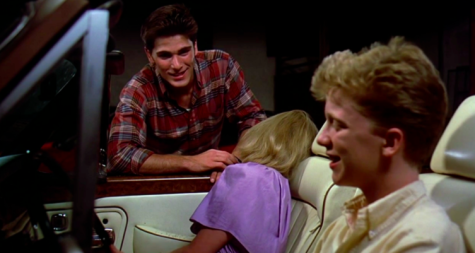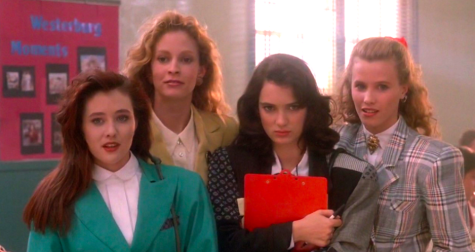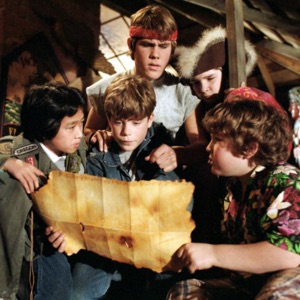Are these 1980s movies ‘classics’ or just old fashioned?
November 1, 2021
Growing up, I loved watching movies my parents recommended from their teenage years. Something about the style and “old-timey” feel allowed me to connect more with them. Looking back as a teenager in 2021, these movies, which I once adored, feel completely foreign. What may have been acceptable then is absurdly offensive and completely backward now.
Sixteen Candles (1984):

“Sixteen Candles,” the classic John Hughes movie, contains the three Ms of a 1980s movie: memorable hairstyles, Molly Ringwald and majorly offensive characters and content. In the movie, Sam Baker (Molly Ringwald) wakes up in anticipation of her 16th birthday, only to find that her entire family has forgotten about it. To many ‘80s teenagers, this movie was an essential part of their childhood, laughing at the freshman geek (Anthony Michael Hall) when he tried to get Sam’s attention but instead made a fool of himself, flashing his brace-filled smile in the process. This movie may, at first glance, seem to be a generic romantic comedy, however, it is impossible to ignore its underlying issues. Gedde Watanabe’s character, Long Duk Dong, portrays all of Hollywood’s racist stereotypes of Asian men. He is degraded by the undiversified characters and deemed the “weird Chinese guy” throughout the film. Additionally, Jake Ryan (Michael Schoeffling), the stereotypical cute guy that Sam and the audience are meant to swoon over, is unsurprisingly misogynistic and justifies rape, as he proudly admits his ability to “violate his girlfriend ten different ways” if he wanted to. These horrifying attempts at humor generalize the Asian community as well as romanticize sexual abuse and harassment.
Heathers (1988):

“Heathers” is the story of Veronica Sawyer (Winona Ryder), a member of the most popular school clique, “The Heathers.” Veronica becomes dissatisfied with her friends when she meets the mysteriously intriguing new boy, J.D. (Christian Slater). As she becomes enamored by her new boyfriend, she realizes how miserable her life as a “Heather” has been. Reflecting on the emotional trauma that the leader of the group, Heather Chandler (Kim Walker), has inflicted upon her and the rest of the school, Veronica gains the courage to stand up to her and struggles to make her school a better place. Taking advantage of this, J.D. manipulates Veronica into pursuing criminal activity by forging suicide notes after murdering various classmates. Watching this movie as a teenager in 2021 is substantially difficult, as it glorifies death, suicide and toxic relationships among high school students. As J.D. reveals himself to be a murderous sociopath, he sexually assaults and attempts to kill Veronica on multiple occasions. Rather than serving as a warning for teenagers, suicide is romanticized, as the overwhelming news and media coverage increases the popularity of those who have passed and popularizes suicide among the other high school students.
The Goonies (1985):

A group of adventurous kids, the self-proclaimed “Goonies,” are pitted against a property development company that plans to destroy their homes to build a country club. The day of their eviction, they discover an old map that supposedly leads to the treasure of the infamous pirate, “One-Eyed Willy.” Hoping this map can lead them to the money needed to keep their homes, they face the Fratelli criminals and encounter many obstacles as they race to find the treasure. Many ‘80s teen movie stereotypes are incorporated throughout this film, from full denim outfits to oblivious police officers who do not trust the teenagers’ calls for help. During the movie, the group encounters the Fratellis’ brother, Sloth. This controversial character is restrained using zoo chains and is physically and emotionally abused by the rest of his family. What is most disturbing is that Sloth, depicted as a misunderstood monster, is meant to represent someone with brain damage or birth defects. What is meant to be a lighthearted film of childhood adventure does not take away from the use of Sloth as comic relief and the offensive and false interpretation of someone with cognitive disabilities.
It is easy to be blinded by old trends and fun-loving characters in ‘80s films. Some could even be seen as progressive for their time. However, unless you want to spend a night infuriated over offensive and stereotypical characters, I would recommend skipping these ones.